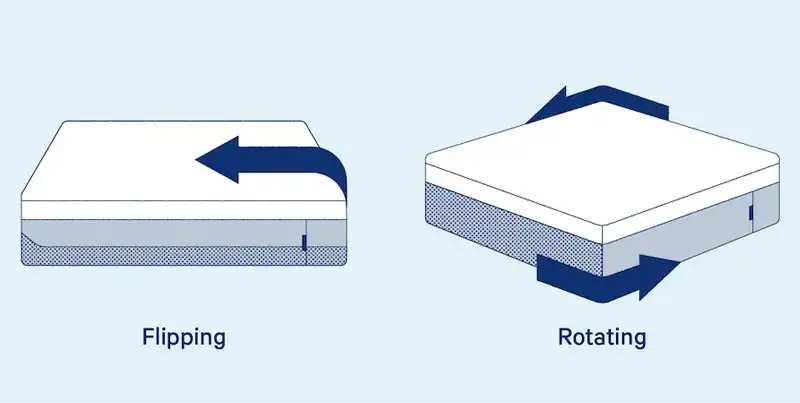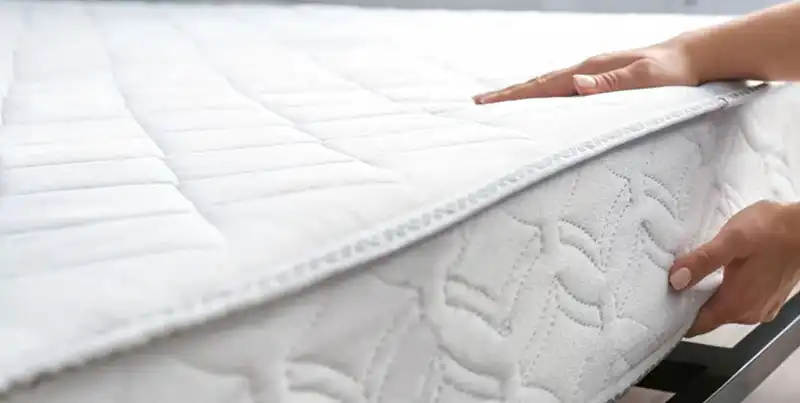In the past, flipping mattresses was a common practice, but with advancements in mattress technology, is it still essential? While some things from our grandparents’ time are worth preserving, the idea of flipping a modern mattress for comfort and longevity may not apply anymore.
Instead of flipping, sleep experts now recommend rotating your mattress to extend its lifespan and maximize its benefits. To dispel the myths surrounding mattress flipping, Victoria Wong, a sleep expert from MattressReviews247, provides insights into the difference between flipping and rotating your mattress.
Reasons Why Flipping Your Mattress is No Longer Advisable
While flipping pancakes or burgers can be part of your weekend routine, flipping your mattress may not be as beneficial. In the past, mattresses consisted of a single layer of coils covered in fabric, offering the same support regardless of which side was facing up. Fortunately, mattress construction has evolved significantly since then, with more advanced and comfortable designs.
Most modern mattresses have a dedicated sleeping side that is constructed with multiple layers of support. These layers are specifically designed to create a supportive core with a comfort layer on top. Flipping a modern mattress would mean sleeping on the base layer instead of the optimized comfort layer that caters to your specific needs and sleeping position.
For example, consider the DreamCloud Premier Rest mattress, one of the best-selling luxury mattresses. It features eight layers of support, with every layer having a specific purpose. Flipping it would result in the coils being the top layer, which compromises the intended comfort and support.
According to Victoria, most modern mattresses are designed to be softer on top and gradually firmer as you go down. The top layers absorb energy, allowing less impact on the coils or dense foam. By eliminating the need to flip mattresses, manufacturers can create more comfortable, supportive, and durable products.
Victoria addresses concerns about uneven wear due to not flipping the mattress. She explains that the pressure from sleeping on it naturally affects both the surface and the bottom, ensuring even usage.
However, Victoria notes that it’s still possible to flip a mattress topper if it consists of a single layer of foam. In such cases, you can experience the same level of comfort on both sides.
What About Foam Mattresses?
Even all-foam mattresses, like the Helix Sunset Mattress, are designed with a specific side for sleeping. The top comfort layer utilizes the company’s proprietary Helix Dynamic Foam, which provides a body-contouring feel. It is also infused with graphite and cooling gel to regulate temperature. The lower layer comprises denser foam for core support. Flipping the mattress would result in losing the cooling and cushioning effects.
The Importance of Rotating Your Mattress
Now that we understand why flipping modern mattresses isn’t recommended, how can we prolong their lifespan? Simply rotating the mattress 180 degrees can help.
Victoria explains that the majority of our weight is carried in the midsection, causing the most pressure on the upper or lower third of the mattress, depending on the rotation. By rotating the mattress, you distribute the pressure more evenly across the entire surface rather than concentrating it on specific spots.
While rotating, Victoria suggests putting on socks and gently walking on the mattress’s ends. Applying pressure in these less-weight-bearing areas helps ensure even breaking-in of the mattress across all sections.
If you have a king-size bed, which measures 76”x80”, you can even rotate it 90 degrees. When done correctly, the long sides will only hang off by two inches on each side, which won’t be noticeable during sleep and won’t affect the support layers within the mattress.
How Frequently Should You Rotate Your Mattress?
During the first few years of owning your mattress, Victoria recommends rotating it once every quarter to make the most of its comfort and support layers. After that, you can switch to rotating it twice a year.
When Comfort Seems Elusive?
Rotating your mattress regularly can help maintain its comfort and support, but mattresses do have a limited lifespan. On average, mattresses last between 7 and 10 years. If you notice significant sagging, discomfort, or a decline in its performance, it might be time to consider replacing your current mattress.
The Sleep Experts at MattressReviews247 are always available to help you find the perfect mattress for your sleeping style.



